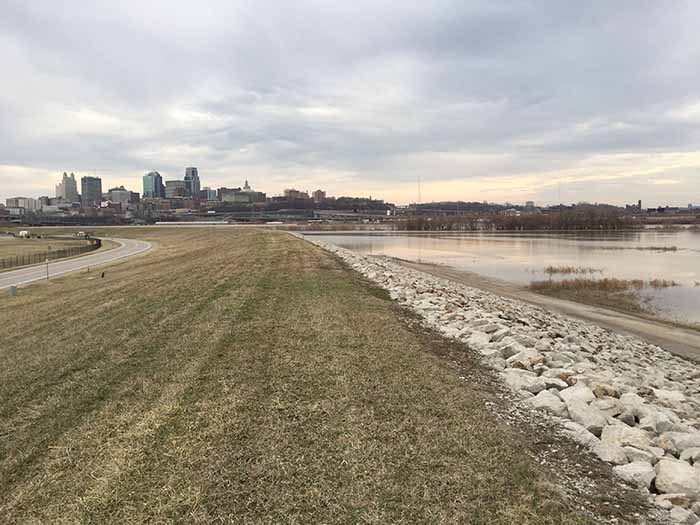Factoring Levee Risk & Resilience as USACE Changes Guidance
Posted on Wednesday, July 3rd, 2019 by Affinis CorpIn Federal Services, tagged in Tags: flooding, levee, usace

When it comes to the risk and resilience of levees, the United States Army Corps of Engineers (USACE) is changing its guidance. Recently, they have been trying to build more resilient infrastructure with an additional factor of safety. For levee sponsors, this translates to additional analysis and ongoing maintenance.
All levees are built to withstand certain flood events. There is no such thing as a zero-risk flood event levee, because it is not possible to predict future rainfall for perpetuity. However, a level of risk can be established. That threshold is found through hydraulic and hydrologic analysis. The first step is modeling the river or creek. Then, water surface elevation is found. The data collected is used to determine the top of the levee’s elevation. Projects currently being designed are using the proposed USACE design underseepage criteria to ensure they will meet soon-to-be current design criteria.
One proposed change in levee underseepage design criteria is the required factor of safety. The existing design criteria requires a factor of safety of 1.5 for flood water at top of levee minus three feet (used when USACE considered freeboard for hydraulic analysis) and a factor of safety of 1.1 for flood waters at top of levee. The proposed design criteria will require a factor of safety of 1.6 for flood waters at the top of levee. The proposed underseepage design criteria will only consider design for flood waters at top of levee.
After the geotechnical investigation is complete, the underseepage analysis is conducted based on the soil below the levee. This drives the design. This information will reveal if the levee is meeting the safety requirements for underseepage. Based on the results, underseepage berms or relief wells may need to be constructed to provide the minimum factor of safety.
Like all infrastructure, levees have to be maintained to provide protection. To do this, levee sponsors should follow the USACE checklist for inspection and their operation and maintenance manuals. USACE inspections are conducted annually with a more in-depth one happening every 5 years. However, some levee sponsors may patrol their levee daily. The degree of monitoring needed is dependent upon the complexity of levee features.
When these practices aren’t happening, levees can fail before water even gets to the top, or they might require additional work during a flood fight. For example, if sluice gates aren’t maintained, they may not close when needed. Then, a more intensive solution might have to be used during a flood event.
To learn more about levee risk and resilience, contact me at jdavis@affinis.us.